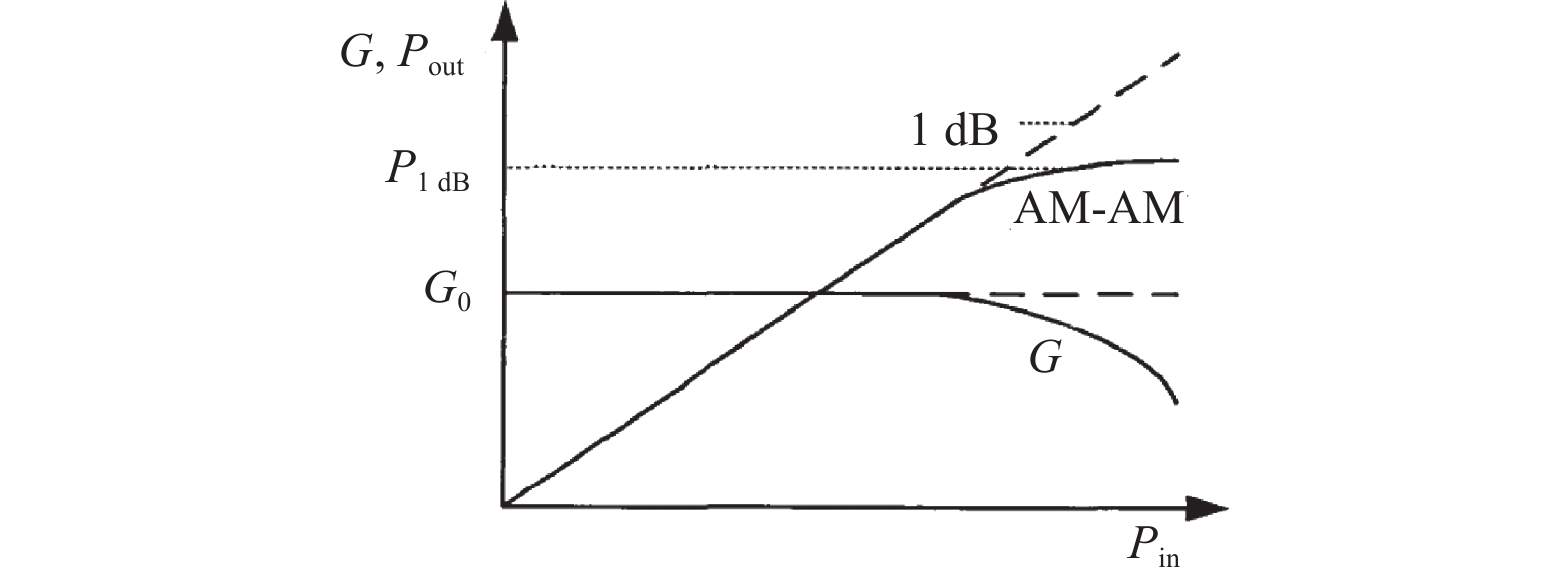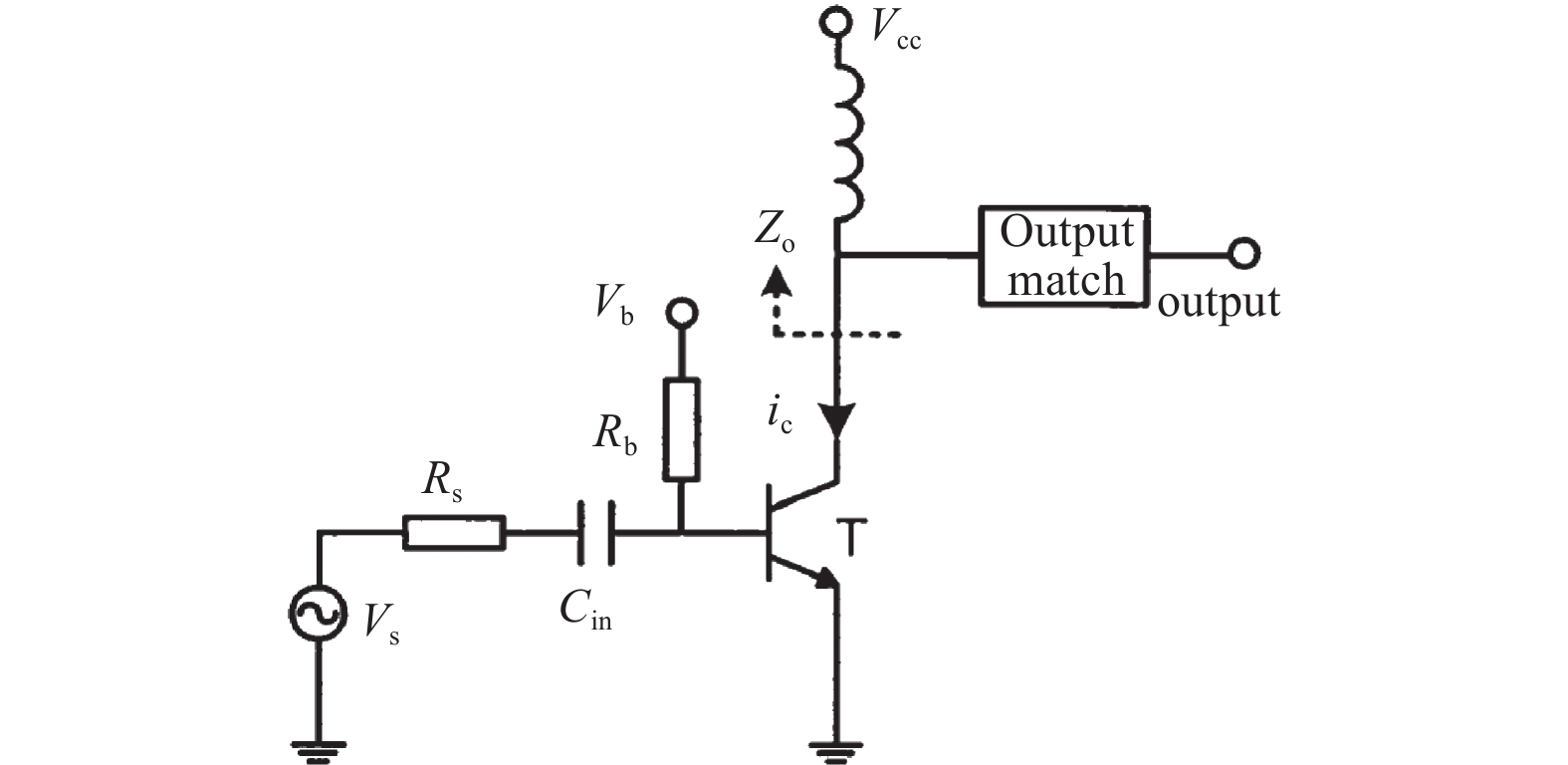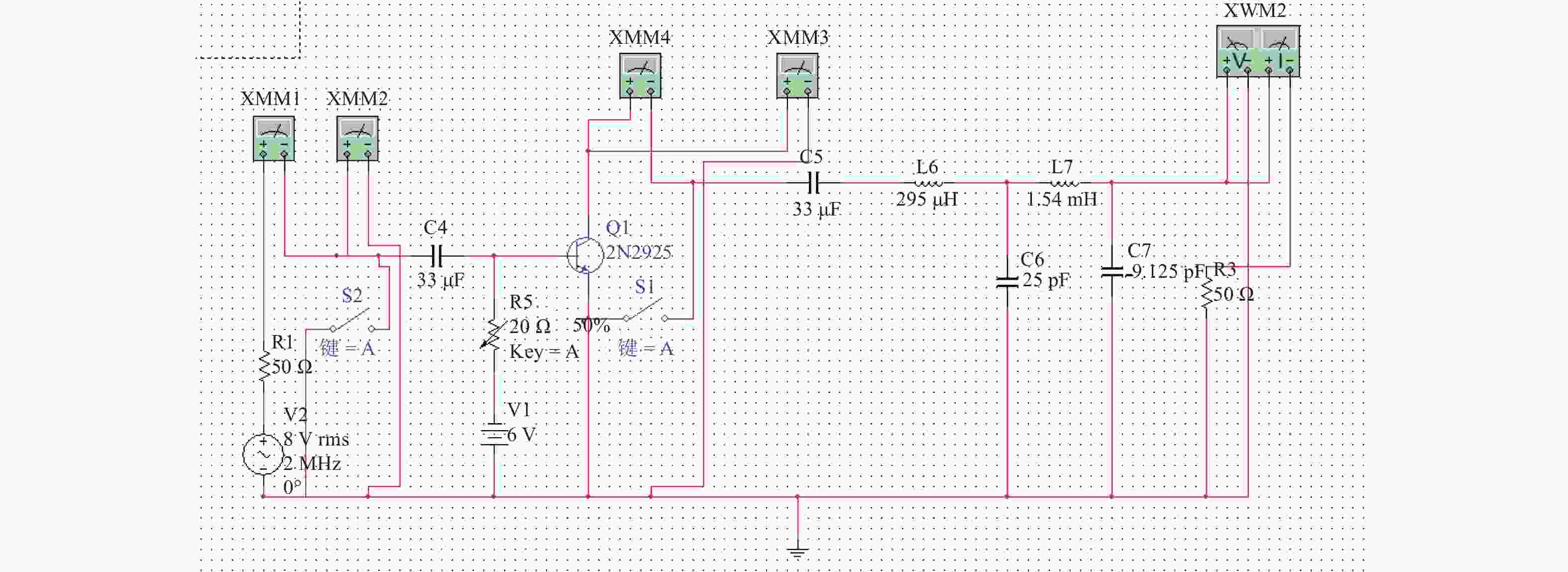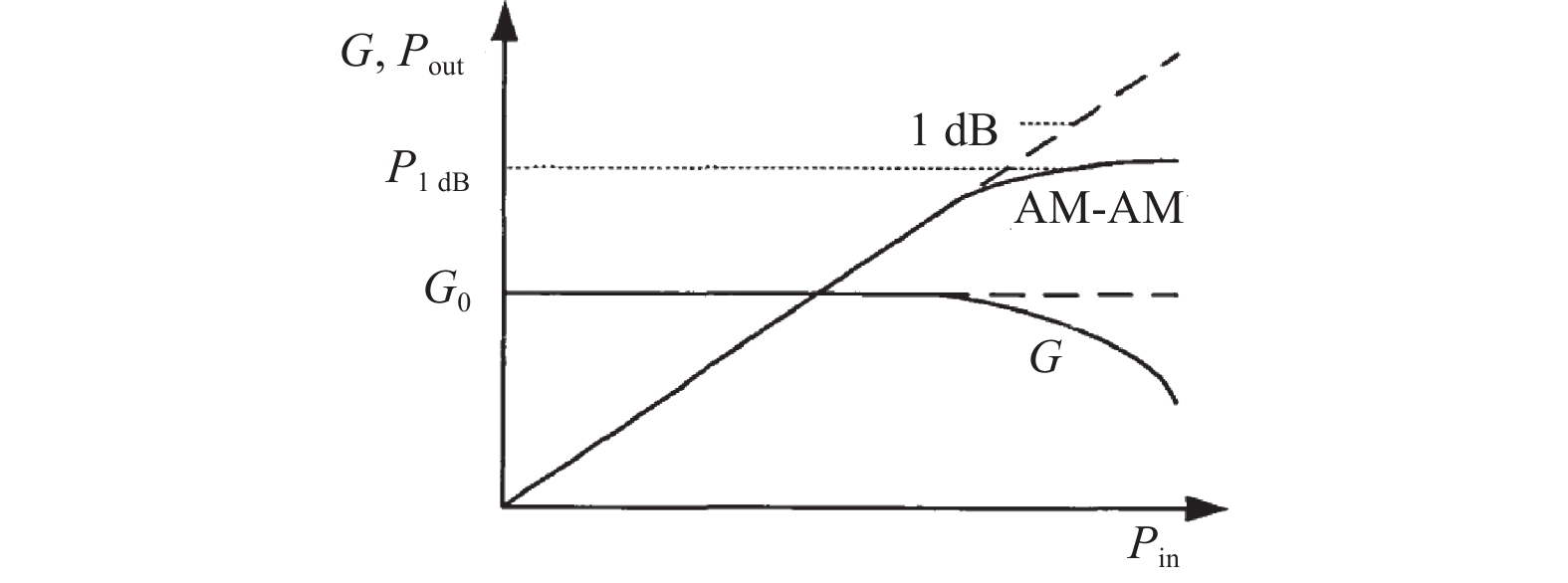Bias circuit optimization design of power amplifier based on Volterra series
-
摘要:
以Volterra级数为理论基础,根据AB类功率放大器的特点,采用混合Π型等效电路对共射放大电路进行建模. 对功放中的非线性元件进行具体描述与分析,从而获得放大器电路的系统行为模型. 提出一种基于Volterra 级数和基尔霍夫电流定律( KCL) 的优化设计方法,快速找出最佳偏置参数. 设计一个工作频率在850 MHz的射频放大器,并计算出工作在兼顾放大器效率和线性的最佳输入偏置大小为6 Ω,此时输出的P1dB为23.4dBm(1 mW为基准功率). Multisim电路仿真证明了理论分析结果.
-
关键词:
- 共射放大电路 /
- Volterra级数 /
- 行为模型 /
- 偏置电路 /
- 电路仿真
Abstract:Based on the Volterra series, a hybrid Π type equivalent circuit was used to model the common-emitter amplification circuit according to the characteristics of the Class AB power amplifier. The nonlinear components in the amplifier were described and analyzed to obtain a model of the system behavior of the amplifier circuit. An optimized design method was proposed based on Volterra series and Kirchhoff's current law (KCL) to find the optimal bias parameters quickly. A RF amplifier operating at 850 MHz was designed and the optimal input bias size for operation taking into account both the efficiency and linearity of the amplifier was calculated to be 6 ohms, and the output P1dB was 23.4dBm (the reference power is 1 mW). Multisim circuit simulation proves the results of the theoretical analysis.
-
表 1 共射结构放大器主要参数
Table 1. Main parameters of common emitter structure amplifier
$r_{ {\rm{b b} }^{\prime} }/\Omega$ $\beta$ $g_{1}/\left({\rm{A}} \cdot {\rm{V}}^{-1} \right)$ $g_{2}/\left({\rm{A} } \cdot {\rm{V} }^{-2}\right)$ $g_{3}/\left({\rm{A} } \cdot {\rm{V} }^{-3}\right)$ 0.05 98 0.065 2.0 10.3 $ C_{ {\rm{b c} } }/{\rm{p F} } $ $ C_{ {\rm{b e1} }}/{\rm{p F} } $ $ C_{ {\rm{b e 2} }}/\left({\rm{n} } {\rm{F} } \cdot {\rm{V} }^{-1}\right) $ $ C_{ {\rm{b e 3} }}/\left({\rm{n} } {\rm{A} } \cdot {\rm{V} }^{-2}\right) $ 6.1 67 0.98 8.7 表 2 AB类共射放大器的测试数据
Table 2. Test datas for class AB common-emitter amplifiers
${R_{\rm{b}}}/\Omega$ ${P_{{\rm{gain}}} }/{\rm{dB}}$ $ i_{\rm{c}0 }/P_{\rm{in} }/({\rm{V} }^{-1}) $ $P_{1\rm{dB} }$ 3.9 12.2 16.0 19.3dBm 4.7 12.5 16.3 22.0dBm 5.1 12.9 17.0 23.1dBm 6.2 13.2 17.2 23.4dBm 7.5 13.4 17.1 23.3dBm 10.0 13.7 16.4 23.4dBm 20.0 14.0 13.8 18.5dBm -
[1] 江润东, 姚金杰, 王闽, 等. 基于负反馈理论的信号调理电路设计[J] . 电子技术应用,2020,46(1):119 − 122. [2] 廖开国. Ka波段功率放大器线性化技术研究[D]. 成都: 电子科技大学, 2019. [3] CHEN X L, CHEN Y, ZHANG H L, et al. Long read range Class-3 UHF RFID system based on harmonic backscattering[J] . Electronics Letters,2018,54(22):1262 − 1264. doi: 10.1049/el.2018.6007 [4] 廖春连, 王健, 翟越. 基于二极管技术优化射频集成电路的ESD[J] . 无线电通信技术,2017,43(3):85 − 90. doi: 10.3969/j.issn.1003-3114.2017.03.21 [5] 张倩, 刘光斌. 基于GFRF的弱非线性模拟电路特征提取[J] . 现代电子技术,2009,32(19):201 − 204. doi: 10.3969/j.issn.1004-373X.2009.19.066 [6] 郭维廉, 齐海涛, 张世林, 等. 电阻栅结构负阻异质结双极晶体管[J] . 半导体学报,2005(6):1218 − 1223. doi: 10.3321/j.issn:0253-4177.2005.06.030 [7] 牛立杰, 张德智, 李佩. 谐波负载阻抗对功率放大器性能的影响[J] . 雷达科学与技术,2004(1):52 − 56. doi: 10.3969/j.issn.1672-2337.2004.01.012 [8] 李文广. 射频功率放大器的研究与设计[D]. 武汉: 华中科技大学, 2006. [9] DMBKES H, KNIG U, SCHWADERER B. InGaAs/InP heterobipolar transistors for integration on semi-insulating InP substrates[J] . Electronics Letters,1984,20(23):955 − 957. [10] PENG J , HE S, YOU F, et al. Volterra series-based model for concurrent dual-band power amplifier using dynamic memory depth[J] . International Journal of RF and Microwave Computer-aided Engineering,2019,29(4):29 − 33. [11] 李英. 新型InP/InGaAs材料双异质结HBT的静态模拟[D]. 北京: 清华大学, 2005. [12] 钟读贤. 晶体管在放大电路中的等效模型[J] . 中国科技信息,2010(1):142. doi: 10.3969/j.issn.1001-8972.2010.01.067 [13] 张晓东. 基于Volterra级数的射频功率放大器非线性分析[D]. 南京: 南京大学, 2013. [14] 张晓东, 程建春, 王锋. 基于Volterra级数快速设计AB类射频功放偏置电路[J] . 微波学报,2012,28(5):65 − 68. [15] 方伟. 800MHz射频功率放大器的研制[D]. 南昌: 南昌大学, 2007. -






 下载:
下载:







